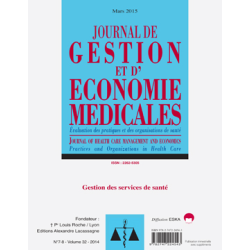


la coordination des différentes tâches à accomplir au sein des équipes évoque une question fondatrice des théories du management et une préoccupation majeure pour le milieu médical. dans ce domaine, la coordination est avant tout abordée comme une affaire de structures et de professionnels construisant des habitudes de travail devenant des « réflexes » au fil du temps. Pour autant, de nombreuses situations nécessitent une approche plus dynamique de la coordination, celle qui est « en train de se faire » et peut bousculer protocoles et structures. il est intéressant dadopter cette approche, dite « en pratique », de la coordination pour examiner la posture des proches, spécifique par rapport à celles des patients traités par les professionnels. les proches représentent le tissu principal du soutien des personnes atteintes dune maladie. appelés « proches-aidants », ils sont conduits à devenir assistants de vie, soignants dans certaines circonstances particulières et/ou gardiens vigilants des signes de détérioration. leur participation est indispensable à la coordination des parcours de soins des personnes malades. leur rôle est pourtant peu étudié sous langle de la coordination « en pratique ». au moyen des résultats dune étude menée sur les soins de supports en cancérologie, cet article interroge les pratiques de coordination développées par les proches-aidants dans le parcours de soins des personnes malades. intégrer les proches dans leur caractère ambivalent, à la fois acteurs aidants, mais également personnes touchées par les conséquences de la dégradation de la santé de leurs proches, est une étape fondamentale à un parcours de soins. mots-clés : Coordination, familles, pratiques, proches-aidants.